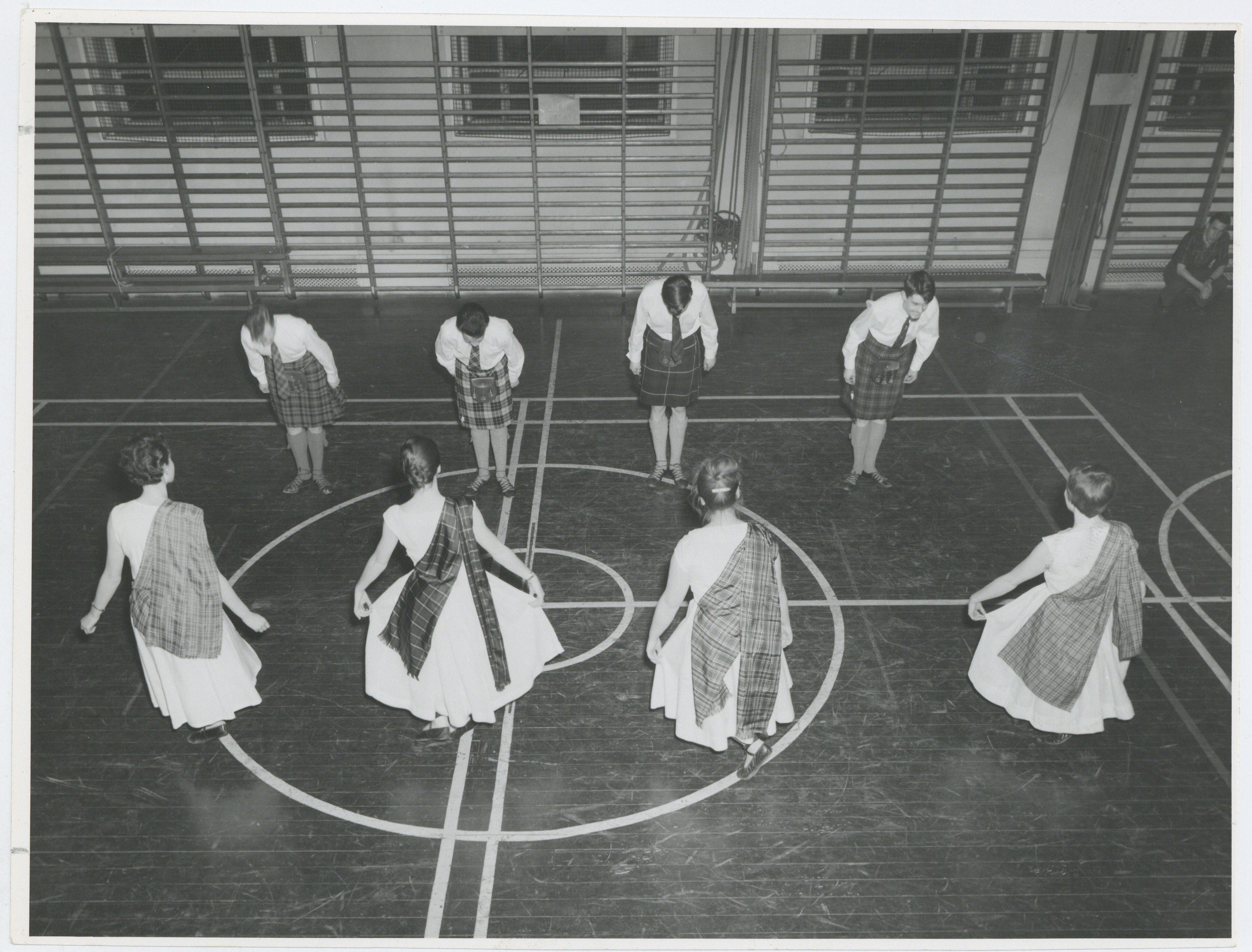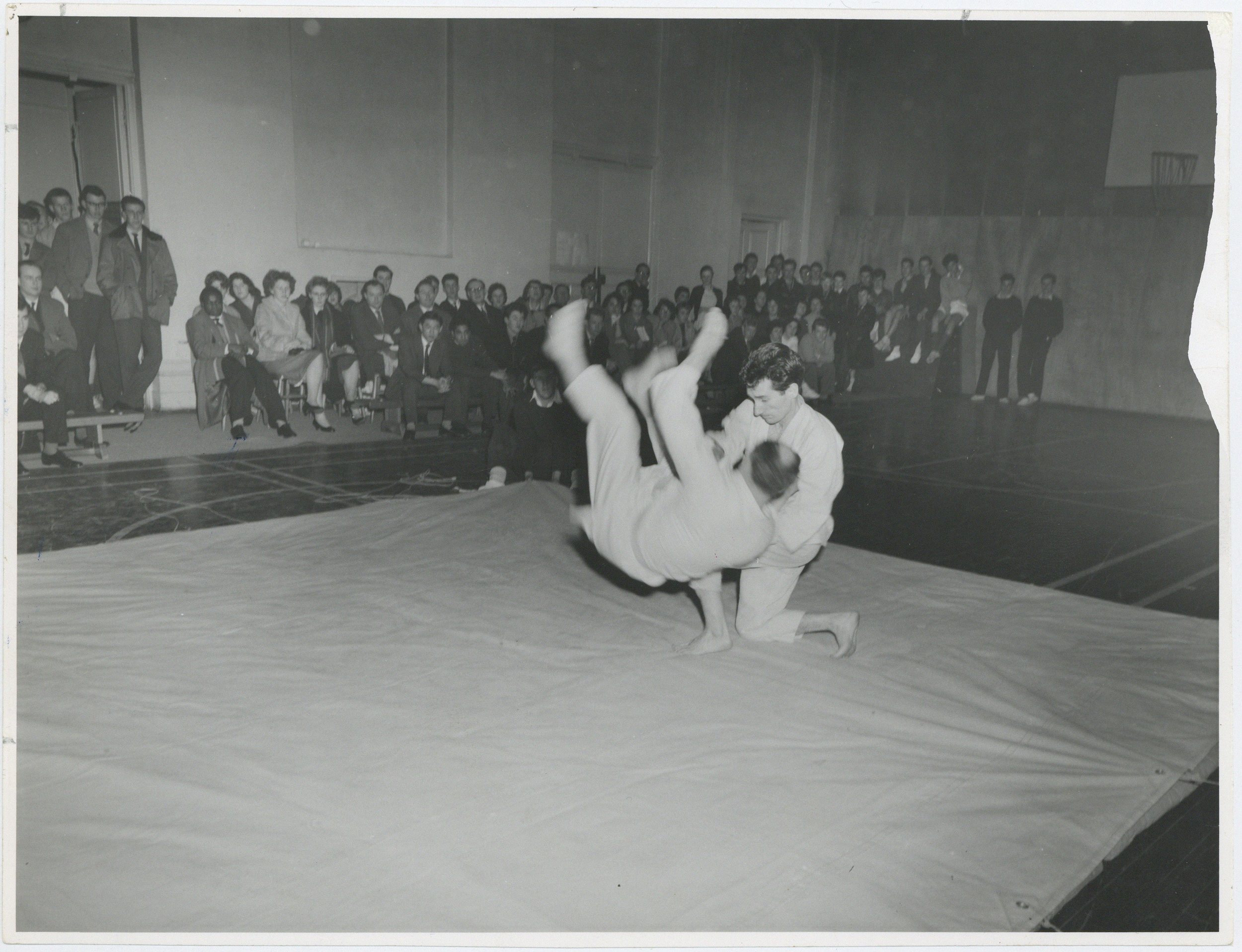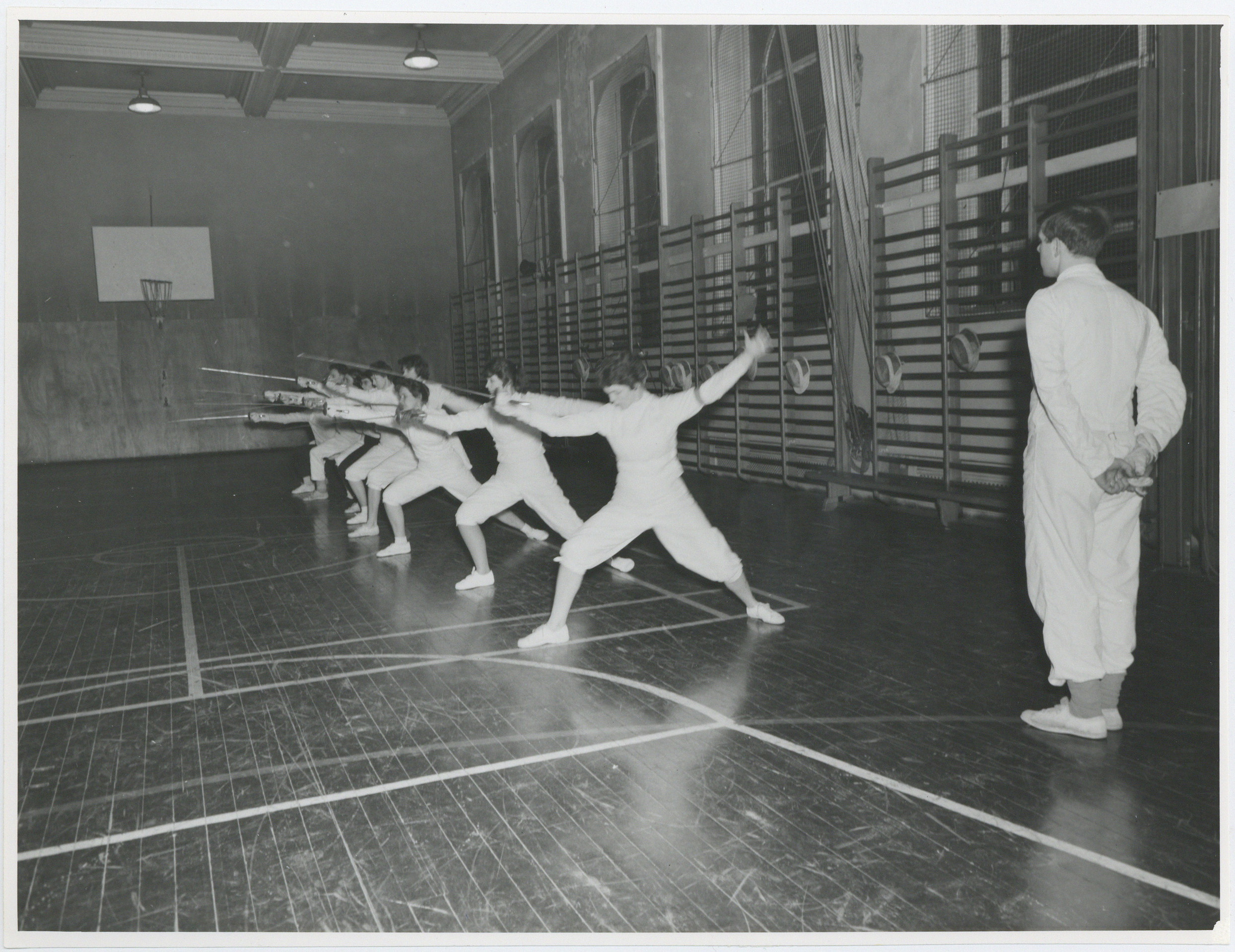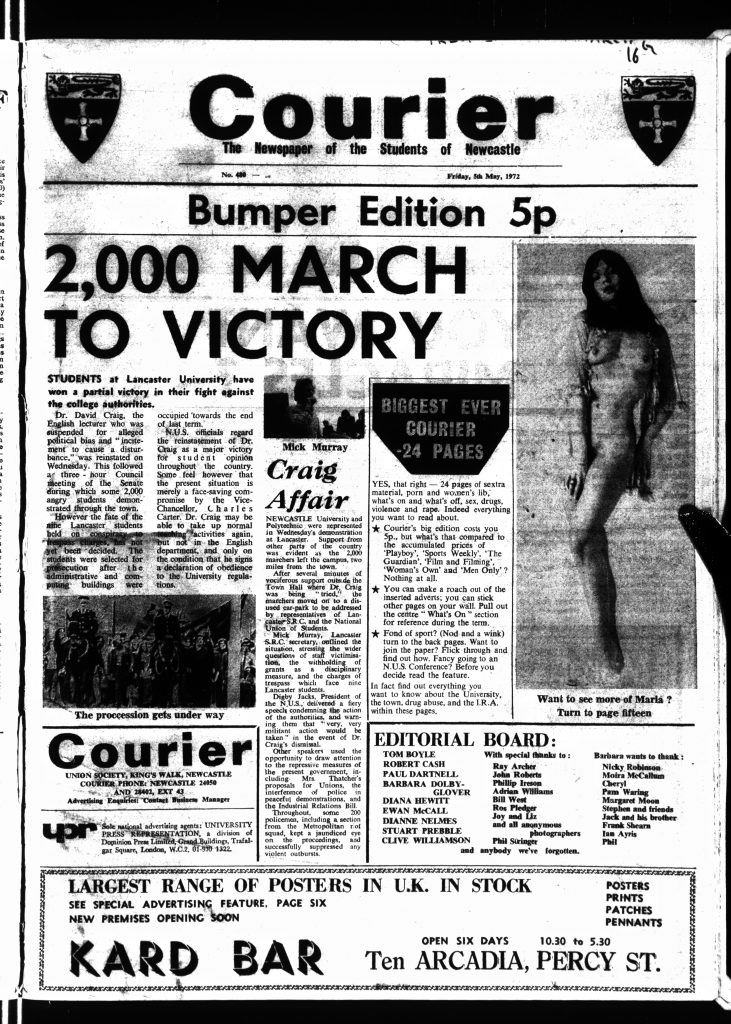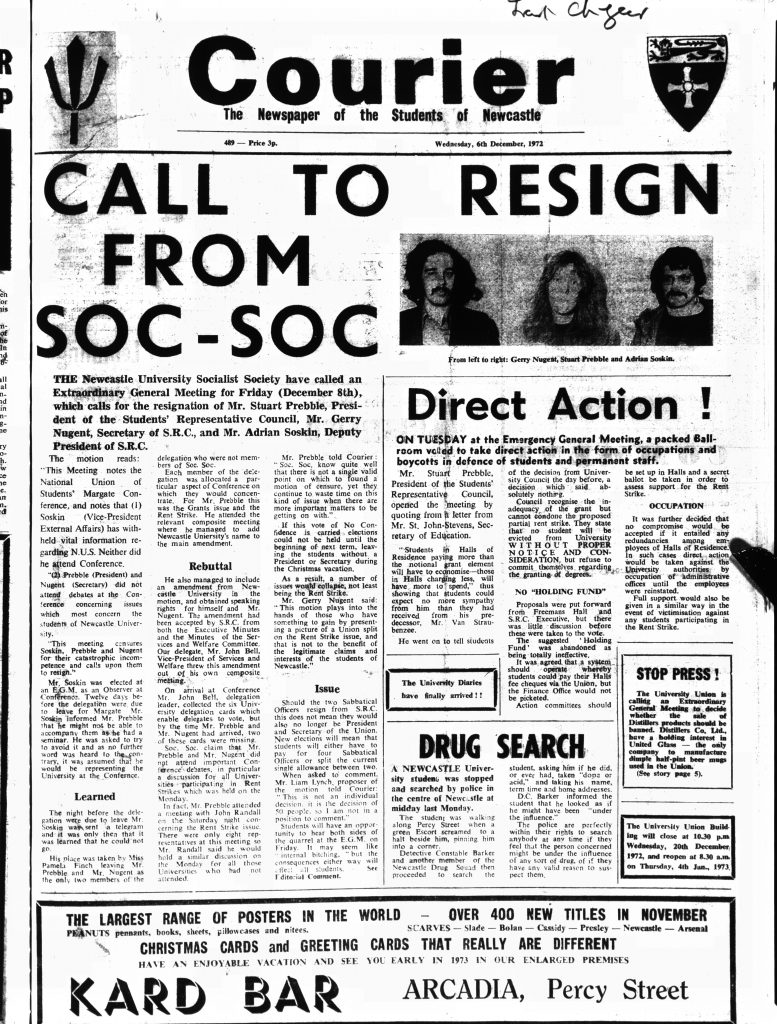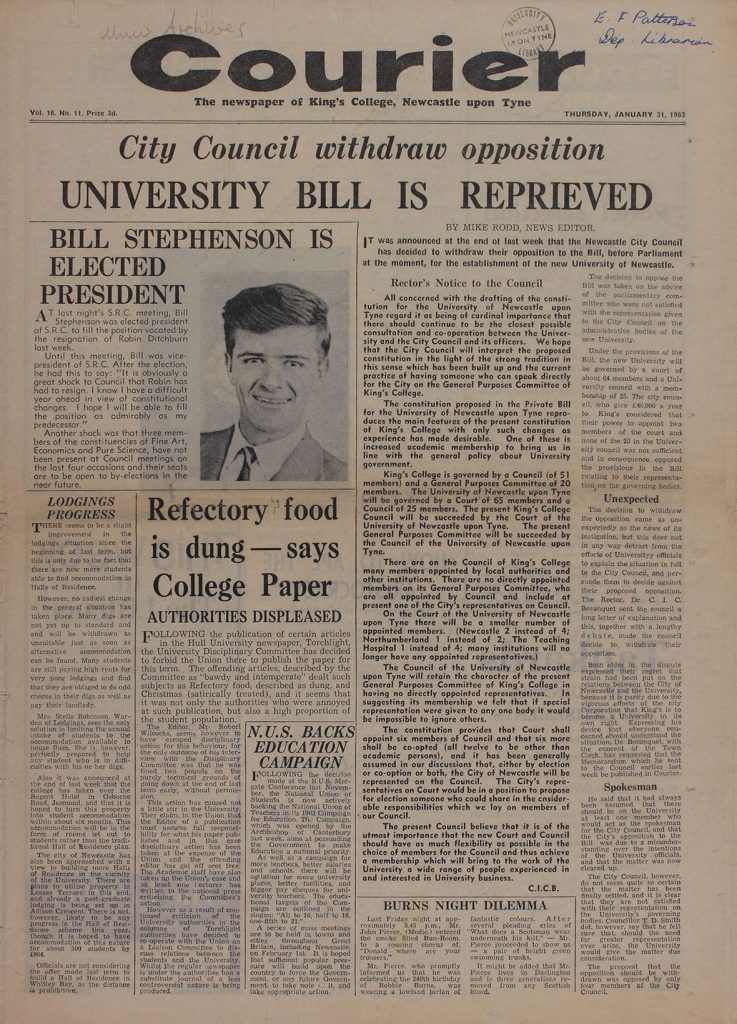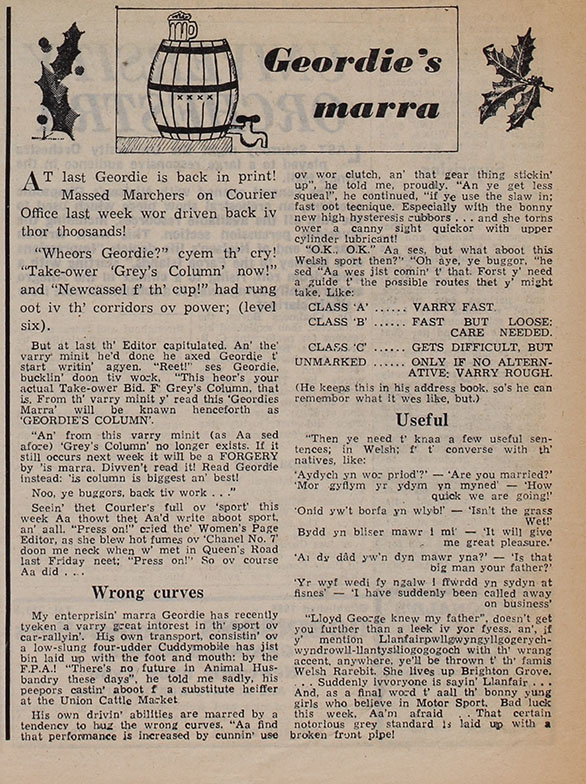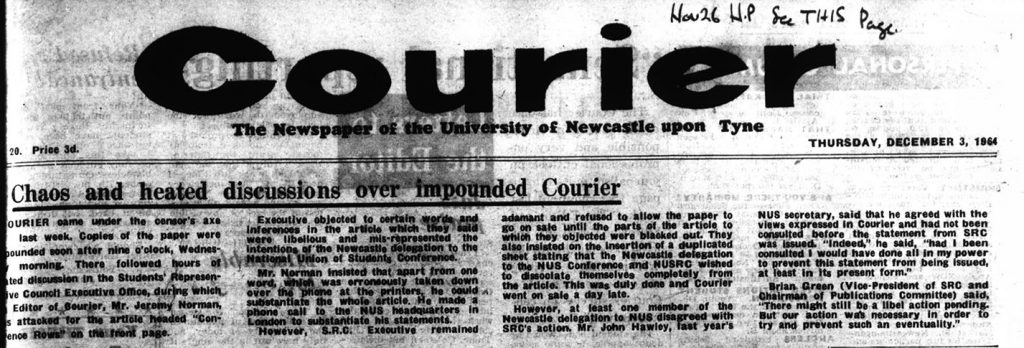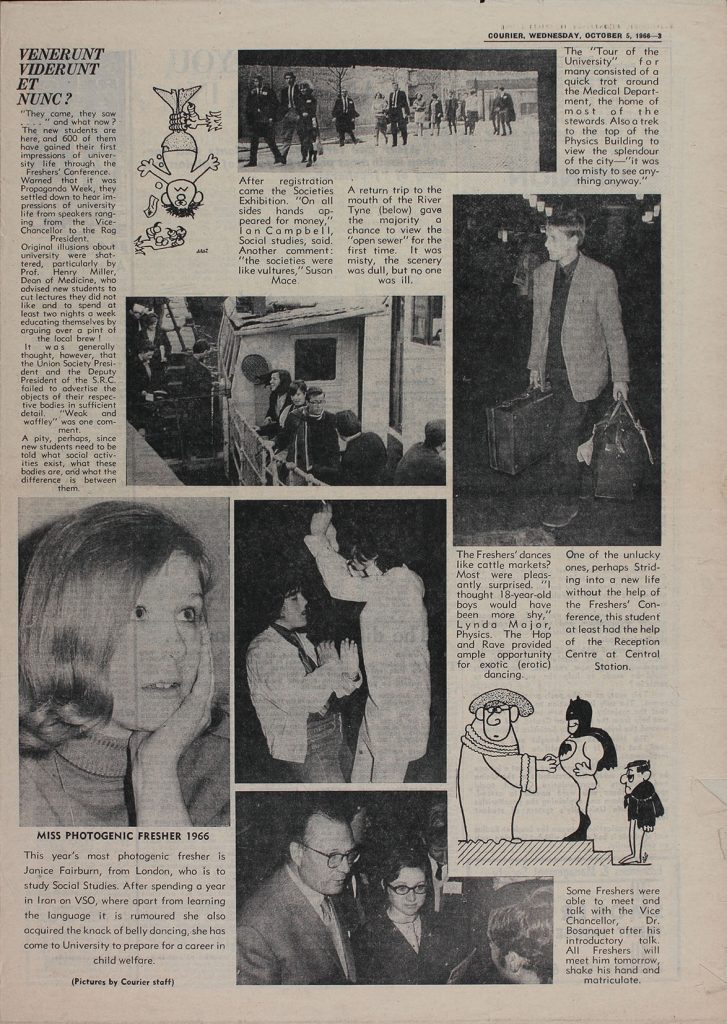This is the third installment in our Courier Special Collections Guest blog series. You can see the other two installments here; ‘1948-55 the early years‘ and ‘Changing Directions 1955-62‘.
1962-69 The Golden Years
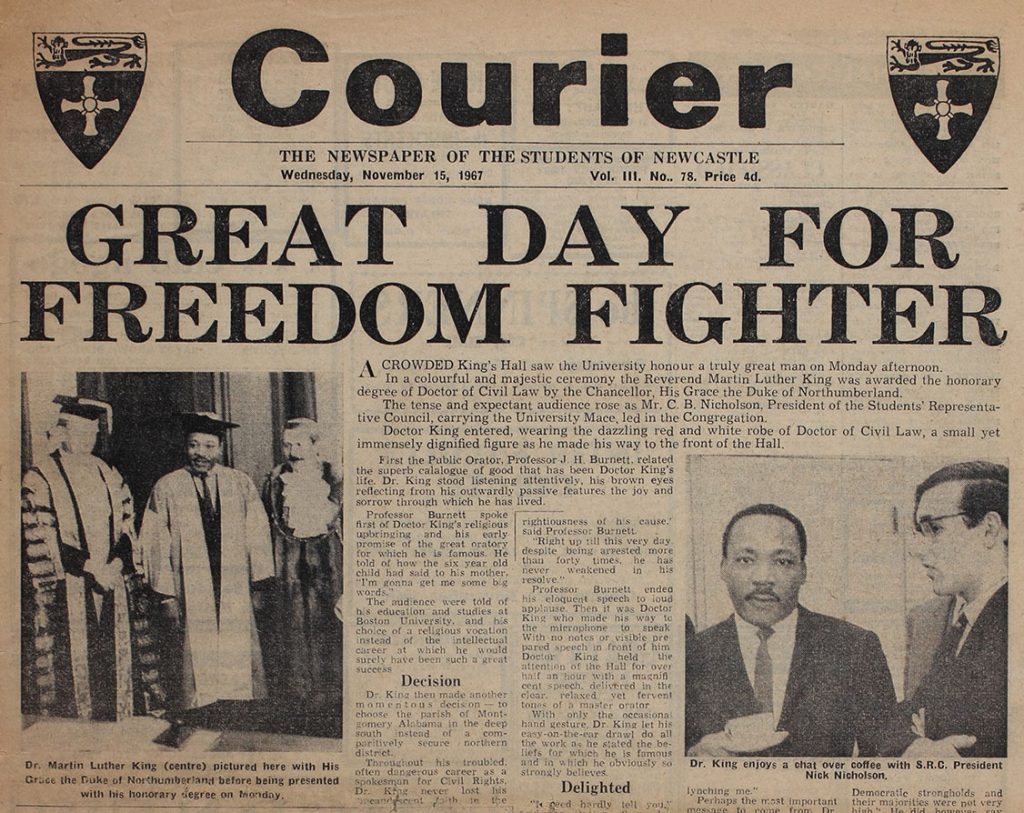
‘Great Day for Freedom Fighter’, Martin Luther King received an honorary degree at Newcastle University, 15th November 1967
By the early 1960s the wind of change was blowing across the city. King’s College won independence from Durham to become the University of Newcastle upon Tyne in 1963, a modern campus was constructed around the old redbrick buildings, and in 1962 the Courier boldly proclaimed that “for the first time in its history” it looked “something like a newspaper”.
A new masthead and a greater use of photography, along with headlines that were much bolder in both size and statement, gave the paper a much more exciting appearance. The paper also reverted to its traditional Thursday publication day, and in 1964 began to experiment with occasional 12-page issues.

‘It’s Earp for President’, example of the Courier with increased use of photography, 9th May 1963
There was little space in the new-look Courier for culture, and the arts reviews that had dominated the paper in the 1950s virtually disappeared, except for several rather weighty features on the University’s architectural wonders, new and old. After a few months the arts began to creep back in, and a short “What’s On” listings panel gradually expanded into a full page of film and theatre reviews.
The focus after 1962 was undeniably on news, however. The Courier began to conduct more investigations and campaigns, establishing itself as a mouthpiece for students. In 1968 the paper ran a series of features on the global student movement, and throughout the 1960s the paper held the Union, SRC and the University to account over issues such as accommodation and rent levels. Satire and sarcasm crept into the paper through the long running features “Grey’s Column” and “Geordie’s Marra”, the latter written in a Geordie dialect.
This more aggressive approach saw sales of the Courier increase, but also had its downsides. In 1964 editor Jeremy Norman was forced to leave the Courier under a cloud, after publishing an article criticising the actions of Newcastle’s NUS delegates at the NUS conference.
The SRC, who oversaw the delegation, tried to stop that week’s issue from being distributed, but after tense negotiations allowed the Courier to be sold after Courier staff had blacked out one particularly disagreeable paragraph, by hand, on every single issue. The Courier retaliated through a statement in the following issue, but the new editor, Martin Pinder, later decided to apologise to the SRC.
Even greater scandal hit the Courier the following year, when the Courier reported the drunken antics of a member of the SRC executive, both as news articles and, less sympathetically, through Grey’s Column and Geordie’s Marra. The student demanded a retraction in the following week’s Courier, and while Ivan Dunn, the editor, did publish a short apology, this was not considered satisfactory by the SRC. Dunn’s defiant attitude, which included a lengthy editorial in the Courier complaining about the SRC’s interference, led to his dismissal by the SRC, with one of the news editors then resigning in protest.
Dunn’s dismissal marked a low point in the relationship between the Courier and the SRC, but the paper itself continued to perform well throughout the 1960s, with sales reaching record levels. Recipes and pin-up pictures of “photogenic freshers” became common, and the paper began to expand its focus beyond the University to include the city of Newcastle. One issue in November 1966 was sold to local residents as an experiment, and in 1967 an “external news” page was introduced, collecting news from local colleges. 1967 also saw the paper expand to 12 pages on a regular basis, and the Courier received praise, particularly for its features, at national student media awards.
You can read the final instalment in this series ‘Courier 1969-72, Problems, Prebble and Porn’ here.
The above content is taken from Courier alumni, Mark Sleightholm’s Courier History site and is interspersed with images from the Courier Archive online website. Mark has begun documenting the history of Newcastle University’s Courier student newspaper, which gives a fascinating insight into reporting trends, recurrent stories and issues, and profiles of the different sections through the ages.
